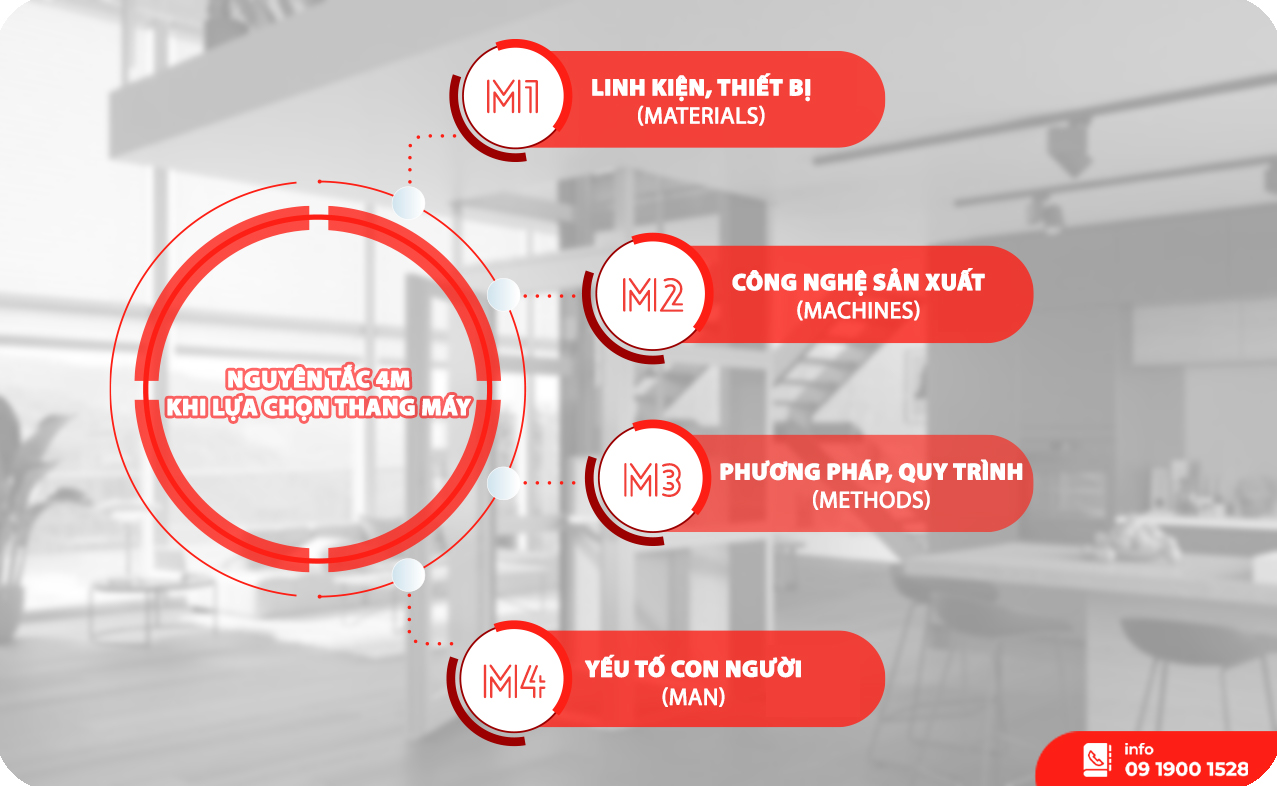Looking for:
Zoom pixelmator pro free

Informative layer subtitles now show useful info about layers, depending on their type: sizes for image layers, text formatting for text layers, path info for shape layers, and more. The design of the blending controls has been updated and they’ll now appear at the top of the Layers sidebar by default.
Layers sidebar viewing options can now be customized, so you can change the size of thumbnails, the visibility of layer subtitles, and the position of the blending controls. You can now quickly add an empty layer using the new Add Empty Layer button. Layer masks will now appear as separate layers in the Layers sidebar. Layer masks can now be unlinked from their parent layer — double-click the line connecting a layer mask to its layer to link or unlink it.
Color adjustments and effects layers let you apply color adjustments or effects to all the layers below them in a composition. These new layer types work just like other layers — they can be masked, hidden, rearranged, and more. You can now easily apply selective edits by using colors adjustments and effects layers with masks.
Use the Shift-Command-A keyboard shortcut to add a colors adjustments layer and Shift-Command-F to add an effects layer. Over new artist-designed shapes have been added to Pixelmator Pro.
Several new shape collections have been added and others have been rearranged, so there are now 10 collections: Basic, Activities, Food, Objects, Arches, Science, Animals, Plants, Organic, and Symbols. All shapes are pixel-perfect — this means their vector points perfectly align with pixel boundaries, ensuring any icons you create won’t have any unwanted blurring. Thanks to support for the M1 Ultra chip, Pixelmator Pro flies when performing machine learning-based tasks on the latest Mac Studio devices.
Tasks like automatic background removal, super-resolution, and photo enhancement are up to 1. The Scrubby Zoom mode makes it easier to zoom images when using a graphics tablet or mouse.
When using the Zoom tool, you can simply drag your image horizontally — like scrubbing video controls — to zoom in and out. When using other tools, first press the Space key, then the Option key to temporarily activate the Zoom tool. If you’d like to, you can change the scrubby zoom scroll direction from horizontal to vertical using the following Terminal command: defaults write com.
You can now create masks by Command-dragging layers onto other layers. You can also copy and paste masks between different Pixelmator Pro documents. You can now set the frame rate and duration when exporting Motion projects. The Up Arrow and Down Arrow keys can now be used to increment and decrement values in text fields. Press and hold the Shift key to use bigger increments. Use the new Option-Right Arrow and Option-Left Arrow keyboard shortcuts to adjust the character spacing of selected text.
Added support for a few more Adobe Photoshop adjustment layer types. Improved SVG writing and reading for better compatibility with other apps. Clipping masks will now be preserved when exporting SVG files. When replacing images using the Replace Image feature, file sizes will now be better optimized in certain situations.
Sometimes, part of the Pixelmator Pro workspace would be hidden when exiting fullscreen. When creating an effects or color adjustments layer from an empty layer, its mask would not be preserved. Color Adjustments and Effects menu items and their keyboard shortcuts would be inactive if the Crop tool was turned on.
Effects with adjustable opacity would sometimes show incorrect opacity values. The width of the fonts menu was incorrect with certain fonts. Pixelmator Pro would quit unexpectedly when importing Pixelmator Classic brushes. In certain situations, opening the Brushes browser would make Pixelmator Pro quit unexpectedly.
Opening photos stored in iCloud will now automatically download full-resolution versions of these photos. Any changes you make in the Photos app — for example, if you rearrange or rename your albums, add or remove photos — will now instantly appear in the photo browser. It is now possible to change the colors of shapes and Color Fill effect right in the Layers sidebar.
To open the color picker, double-click the layer thumbnail. You can now quickly convert color adjustments applied to a layer into a color adjustments layer. Option-scrolling to zoom using MacBook Air trackpads would sometimes work incorrectly. Changing the image size would not scale the grain size and sharpen radius of the Grain and Sharpen color adjustments layers.
Added a few shape-related stability and performance improvements and fixed an issue with shape thumbnails. Thanks to the new shapes browser, finding and inserting shapes into your designs is now quicker and easier than ever. Find the new shapes browser in the Shape tool’s options pane, the Add Layer menu at the top of the Layers sidebar, or add the new shapes browser button to your toolbar. Seamlessly browse your entire shapes library without switching between different shape categories.
The photo browser is now even more stable and powerful, bringing a smoother image browsing and search experience. Use the new Zoom slider to change the size of image thumbnails. Add images to favorites using a Favorite button in the toolbar. Preview image names by hovering the pointer over their thumbnails. The photo browser will now show progress when downloading photos from iCloud and when indexing image search results. You can now Control-click an image thumbnail to access a shortcuts menu with additional image opening options.
Option-click the Open button in the photo browser to open the original, unedited image for images edited in Photos or using third-party extensions. If an image fails to open, Pixelmator Pro will show more informative errors to help you troubleshoot issues quicker. You can now add and edit layer styles of multiple selected layers.
Original styles — fills, strokes, and shadows — applied to each individual layer are kept. You can also add, paste, and reset layer styles, color adjustments, and effects of multiple layers at a time. When exporting an image multiple times during the same editing session, Pixelmator Pro will now remember the last used document color profile setting.
Advanced shapes exported to Motion file format will now be more accurate. You can now reset all Crop and Quick Export presets to default. The Reset All option will appear when pressing and holding Option while in the preset shortcut menu.
Images with certain effects would sometimes look different when exported. Pixelmator Pro would occasionally stop responding when saving changes. Trying to load a Photos library that’s been deleted or removed with an external storage drive would cause Pixelmator Pro to quit unexpectedly. Use the new Shrink Text to Fit feature to automatically reduce the size of text when it’s too big for its text box or path. Pressing Shift-Enter while typing will now continue text from a new line instead of a new paragraph.
You can now quickly preview images in the photo browser by pressing the Space bar. Replace layers, shapes, and save custom shapes more quickly using new shortcut menu options and main menu items. When inserted, larger images will be automatically resized to fit the canvas. Thanks to performance optimizations, editing complex compositions is now 5 times faster. Memory management has also been improved to fix and prevent memory-related issues.
Automatically select the subject of any image — also with just a click. Easily make advanced selections of challenging image areas — even hair or fur. Use Smart Refine to turn a rough selection into a pixel-perfect one. Automatically remove any traces of the previous background from the edges of objects. Export files to Motion format to create motion graphics more easily than ever.
The design of the Export for Web tool has been refreshed to make it easier to use. Use the new Distribute Spacing feature to easily evenly space objects of different sizes. Use the new Remove Background feature to automatically remove the background from any image with just a click.
Find this new feature in the Pixelmator Pro toolbar, the Edit menu, by pressing the Shift-Backspace keyboard shortcut, by pressing and holding the Command key when dragging and dropping images into Pixelmator Pro documents, as a Quick Action in the Finder, and when Control-clicking image layers in the Layers sidebar.
The new Select Subject feature lets you automatically select the subject of any image — also with just a click. Note that this feature works especially well on macOS 12 and devices powered by the M1 chip. Thanks to the new Select and Mask tool, you can now make advanced selections of challenging image areas — like hair or fur — with ease. In the Select and Mask tool, you’ll find a redesigned Smart Refine feature that turns rough selections into accurate ones automatically.
When using the Select and Mask tool, you’ll also find a Refine Edge Brush that intelligently makes accurate selections of edge areas. To see your selection in more detail, you can try different selection overlays, like On Red, On White, or Black and White. Once you’ve refined your selection, choose to ouput it to a selection, a mask, a new layer, or a new layer with a mask. In addition to the Select and Mask tool for refining and creating selections, we’ve added a Refine Mask tool for refining and creating masks.
Use the Decontaminate Colors feature to remove any traces of the previous background from the edges of objects. The Pixelmator Pro actions in the Shortcuts app have been updated to be able to remove backgrounds and create subject masks from any image not just portrait images. The Export dialog now features an option to export images at custom sizes and scale factors. The last-used export location will now be remembered app-wide rather than for each document.
A progress indicator will now be displayed when using the Denoise feature. When exporting images to custom sizes using the Export dialog, the Bilinear algorithm will now be used for resizing rather than Lanczos.
When exporting to PNG using the Export dialog, small images with no color profile would be a little larger than they could be. The Custom Size option in the Export dialog would remember sizes incorrectly. Outlines for completely straight paths drawn with the Pen or Free Selection tool would sometimes be displayed incorrectly. When using the Select and Mask tool, outputting a selection of a RAW layer to a new layer would create graphical artifacts.
So, we added support for complex shapes using vector masks! We were planning to only add support for vectors in Motion but, at the beta testing stage, we had quite a few request for image layers too. However, as we added support for image layers, we decided we could do this too. Image masks on all layer types are supported! If you apply a Gaussian blur using the Effects tool in Pixelmator Pro, it will be preserved when you export it to Motion.
Pixelmator Pro features a huge number of Shortcuts actions, including a Convert Image action that lets you convert between different image formats. And you can now use that action to convert files to Motion format! Super happy we were able to add this too. Certain SVG filters and effects are now supported — gaussian blurs, drop shadows, and inner shadows, including SVG 2 drop shadows. Text support has been greatly improved, including support for path text, multiline text, text with multiple styles in spans, better whitespace handling, and more.
SVG masks are now supported, both clipping paths and image masks. Blending modes in SVG files were previously not supported — they are now. Added the ability to constrain the proportions of objects in SVG files, both when importing and exporting. Fixed an issue that would cause Pixelmator Pro to quit unexpectedly when closing documents. On Apple silicon-powered devices, the speed of advanced PNG compression has been greatly improved. You can now choose to keep or remove transparency when exporting WebP images optimized for the web.
The new Distribute Vertical Spacing and Distribute Horizontal Spacing features let you evenly space objects of different sizes. Pixelmator Pro actions in the Shortcuts app were not working with a larger number of images — they should now be able to handle hundreds of images and work faster than before. When using the Pixelmator Pro actions in Shortcuts to export images for the web, remove noise, match colors, or increase resolution, the Pixelmator Pro app would stop responding while these actions were being processed.
Square images would not be resized with the Pixelmator Pro Resize Images action. The View and Window menus have been rearranged to make the View menu a little more compact, moving window-related options to the Window menu. When exporting SVGs using the Export for Web tool, hidden layers will not be included in the final file. The Image Size keyboard shortcut was not working with Japanese keyboards.
With certain effects on shapes in PSD files, they would be opened incorrectly. Compatibility with certain third-party cloud storage providers has been improved. Support for masks in projects exported in Motion format has been improved, adding the ability to extend the lifetime of object masks. This fix was added by our colleague in Kharkiv, who’s been working with us for over a year now. Although he’s on indefinite paid leave, he saw this bug was an easy fix and pushed it to our git repo.
Almost immediately after, he had to run down to his local bomb shelter as the Russian army started shelling residential areas of his city. The Pixelate effect will now be automatically applied from the top left corner of the image. The default position for the Pattern Fill effect will now be from the top left corner of the pattern image rather than its center to make presets that use this effect function more reliably.
The decimal point can now be used as a decimal separator even in locales that use commas for decimals — if it’s the only separator, points will be considered the decimal separator. If you’d like to disable text field math, use the following Terminal flag: defaults write com.
Fixed a few cases where text field and tooltip values would be displayed as -0 or Document opening progress would sometimes be displayed incorrectly. You can now use the following Terminal flag to switch to package-type document saving: defaults write com.
Find 28 powerful Pixelmator Pro actions in Shortcuts, including our entire suite of machine learning-powered tools. Easily create portrait effects with automatic portrait masks for any photos inserted with the FaceTime camera. Use the beautiful new Bokeh blur effect to apply realistic photographic blurs to images.
Pixelmator Pro can now open photos you’ve edited in Pixelmator Photo for iPad. Pixelmator Pro is now fully compatible with and works great on macOS 12 Monterey. To show you what Shortcuts can do, we’ve also included 6 very cool sample shortcuts — find those in our What’s New window. The new comparison slider lets you see a split view of any layer with and without edits applied to it. To turn on the slider, you can Option-click the Show Original button in the Tool Options pane when using the Color Adjustments, Effects, retouching, and reshaping tools.
Or, you can force click your image while using the Color Adjustments and Effects tools. When inserting image layers using the FaceTime camera, these will now include portrait masks to make it easier to blur or remove backgrounds and add effects to your FaceTime photos. Use the new Bokeh blur effect to apply beautiful photographic blurs to images.
Thanks to support for importing. Get machine learning-powered suggestions for eye-catching crops with just a click. Instantly fill any layer with a color by dragging and dropping from the new color picker in the toolbar.
Automatically paint brush strokes along paths, layers, and selections using any brush in your collection. The redesigned Type tool now includes a text size slider, advanced spacing options, and other improvements. An all-new engine for opening and saving Adobe Photoshop documents significantly improves support for PSD features such as text, effects, and many others.
When opening or exporting PSDs with shapes, these layers will now be preserved as vectors. The Crop tool has been redesigned and now features an ML Crop button that provides suggestions for how you could crop your photos to make them more eye-catching. The Crop tool will now be much faster with large documents that contain many layers. New perspective correction sliders will let you adjust the perspective of images right in the Crop tool.
The Quick Fill feature adds a way to quickly fill images, shapes, and text layers with a color using the magic of drag and drop. You can drag and drop from any color well in the app onto any layer in your image or even onto layers in the Layers sidebar.
The new color well in the Pixelmator Pro toolbar will now display both your foreground and background colors and let you switch between them. The Stroke with Brush feature lets you automatically draw brush strokes along any image layer, shape, or selection, using any brush in your collection.
You’ll see a live preview of your brush stroke as you adjust its basic and advanced settings. You can also simulate tablet pressure and set a maximum pressure location for your brush strokes. The redesigned Paint tool features an all-new brush browser with the ability to search for brushes by name.
After changing the settings of a brush, you’ll also be able to update the selected preset with just a click.
The Paint tool now includes a Smoothing feature that will automatically smooth your brush strokes as you paint. The Type tool has received a makeover and now includes a text size slider, buttons for changing text size in small increments, a text field, and text size presets, bringing a wide variety of ways to resize text. The new Advanced Options action pop-up menu makes character spacing, baseline, baseline shift, and ligature options easier to reach. The new Spacing section lets you adjust line height and the space before and after paragraphs.
The new Indents section gives you a way to adjust paragraph indents for the first line and the left and right sides. Double-clicking the thumbnail of a text layer will now choose the Type tool. Character spacing can now be set much more precisely, with the ability to enter decimal values.
The options for adjusting the color of the Pixelmator Pro window background have been updated, adding presets specifically designed for working with images of various colors. To quickly change the color of the window background, you can now Control-click anywhere outside your image. The color of the checkerboard will now adapt to dark and light appearances. The Selective Color adjustment will now appear above the Color Balance adjustment. When deleting cropped areas, line shapes that are partially outside the canvas will no longer be deleted.
Pressing and holding the Option key while dropping layers into your compositions will now turn off automatic layer naming. Option-Command-clicking a layer thumbnail will now load a selection according to the grayscale values of an image. You’ll also find this in the Edit menu when pressing and holding the Shift key. After starting to paint a brush stroke, the shape and grain textures would be mixed up in certain cases. Sometimes, when using pressure-sensitive tools, the first brush stroke would be painted without taking pressure into account.
After changing certain options using buttons in the Arrange and Style tools, undo steps would not be registered. After selecting colors from swatches in the Touch Bar, undo steps would not be registered. The layout of the presets in the template chooser would be incorrect after copying certain layers to your clipboard. When inserting very large PDF documents as layers, these would be cropped. The Show Original button was not working in the reshaping tools. This update includes no changes to the Pixelmator Pro app itself but fixes an issue with our Mac App Store video.
The new Copy Merged command lets you copy your entire layered composition or selected area as one image. Pressing a modifier key while the Hand tool is active would cause Pixelmator Pro to stop responding.
When adjusting angle options in the Style tool, using the arrows would reset values. The layout of path text was incorrect in various situations. Many more advanced text features in PSD files are now supported in Pixelmator Pro, including symbol sizes and capitalization. The rendering of effects has been significantly improved, too. More properties of ABR brushes are now supported, bringing much improved ABR brush import, including support for bit brushes.
When editing the vector points of shapes, pressing the Escape key will now exit editing without unselecting the shape. The selected appearance of the Info button in the toolbar has been updated to better match the look of macOS The appearance of the View button in the toolbar has been updated.
In rare cases, Pixelmator Pro would quit unexpectedly with certain Type tool settings customized in the Touch Bar. The performance of the Refine Selection tool’s Expand slider has been improved. It would not be possible to quit Pixelmator Pro after certain long-running actions. After viewing a video tooltip and closing it, the tooltip would continue to use resources even after being closed. When using the Shape tools and previewing blend modes with no shape selected, Pixelmator Pro would quit unexpectedly.
Occasionally, the app would quit unexpectedly when closing documents. In certain files, timezones in EXIF timestamp data would be handled incorrectly. The color of the Pixel tool could not be changed in images without an assigned color profile. Line height in PSD files would be handled incorrectly in certain cases.
The thumbnails of Pixelmator Pro files would sometimes be pixelated. Refine Selection would not work correctly when the selection being refined contained the entire image. Full, native support for the incredible M1 chip means Pixelmator Pro is blazingly fast on M1-powered Macs and tools like ML Super Resolution are up to a staggering 15x faster.
To match the fresh and modern look of macOS 11, Pixelmator Pro also features a new unified toolbar and a beautiful new app icon. An interface redesigned from the ground up with a beautifully modern Mac appearance, a new Effects Browser, workspaces for photography, design, painting, and illustration, interface customization, and much more.
Recover much more detail in the shadows and highlights of photos. Use the Export for Web tool to export WebP images and create export presets. When opening ProRAW photos with depth masks, they will now be included as layer masks. The fourth version of ML Super Resolution brings improved upscaling of high-contrast textures, better compression artifact removal, including removal of WebP compression artifacts, and better noise removal. An improved plug-in two, in fact brings full-size Pixelmator Pro file previews in the Finder and thumbnail syncing across iCloud-enabled devices.
With full support for LUTs, you can now edit the colors of images using color presets created in other apps. Intelligently convert LUTs into color adjustments using machine learning magic.
A set of 48 LUTs in 5 different collections created by the Pixelmator Team is included with this update. Almost every part of the Pixelmator Pro interface has been meticulously fine-tuned and refreshed to make it even more intuitive. The gorgeous new Effects browser makes it easier than ever to find and apply effects, featuring live effect previews and instant search. Full interface customization lets you customize Pixelmator Pro in any way you like. Choose from four new workspace presets for photography, design, illustration, and painting.
The new, more compact presets browser makes it easier to browse and apply color adjustment, effect, layer style, and shape presets. Thanks to preset collections, you can now group related presets and even share collections with others. Native support for the incredible new M1 chip lets you take full advantage of the power of all the new Apple silicon devices. Thanks to its entirely Metal-powered editing engine, Pixelmator Pro can use the unified memory architecture of Apple Silicon to greatly speed up image editing.
With a dedicated Neural Engine in the M1 chip, the Core ML-powered features of Pixelmator Pro will see huge performance boosts of up to a staggering 15 times. A beautiful new app icon makes Pixelmator Pro feel right at home in your Dock. The new unified toolbar, new-look icons, and all-new native controls make Pixelmator Pro a truly native macOS 11 app.
Quickly zoom your images in and out using the new Zoom slider in the unified toolbar. Find 7 new color adjustment preset collections, including Cinematic, Modern Films, Vintage, and Urban. Speed up creating designs with beautiful new shape collections like Nature, Science, Education, and more.
A range of beautiful new layer style and gradient presets will make your text, shapes, and illustrations look even better. Full app customization gives you complete freedom to customize the position of the Pixelmator Pro Tools and Layers sidebars, the buttons in the new unified toolbar, and the list of visible tools. Change the position of the Tools sidebar, the Layers sidebar, and the tool list, saving your favorite workspace layouts as presets.
Customize the Pixelmator Pro toolbar, adding handy new controls like Document Info and the new zoom slider. A Hand tool for scrolling images is now available — its keyboard shortcut is the H key. The Clone tool can now be selected using the O keyboard shortcut. The Custom Shape tool has been renamed to Shape, it has a new shape browser, and can be selected using the U keyboard shortcut. Auto Select can now be customized to select layers instead of groups.
The Layers sidebar now features an Add button to make it easier to add new layers to your documents. Pressing the Escape key will now deselect your currently active layer, improving illustration workflows and making it much easier to customize the style of shapes before drawing them on the canvas. When editing vector shapes, you can now automatically align their anchor points to the pixel grid.
Transparency will now be displayed in the previews of layer style presets and gradients. EDR Mode is now supported on all displays that have the ability to display extended dynamic range data. Nudging the crop box using arrow keys would reset the aspect ratio constraint.
Removing layers with color adjustments would sometimes result in memory not being released. Gradients would not be rendered using wide color in wide color images. Dragging and dropping layers between documents was not working. GPS metadata in exported images would be slightly modified, resulting in inaccurate info. Multiple AppleScript fixes, including QR code and face detection position, a fix for the resize canvas command, getting the color properties of layer styles, and more.
The Styles, Color Adjustments, and Effects tools now have a Favorites preset collection where you can add your favorite presets. You can now pin the histogram to the top of the Tool Options pane — find the new option by clicking Customize at the bottom of the Tool Options pane.
Pressing the Shift-P keyboard shortcut will now cycle between the Pen and Freeform Pen tools and pressing P will select the last used pen tool.
Pressing the Shift-U keyboard shortcut will now cycle between every shape tool and pressing U will select the last used shape tool. The Auto-Center option will be remembered for all new documents. Whether presets are visible or hidden will now be remembered for new documents.
Path text layers will now be flipped and rotated around the center of the path rather than the text layer. Document preset names will now be displayed in multiple lines if they do not fit into one. The smart alignment guides would not always appear correctly in certain situations.
On M1 Macs, images would appear transparent if the document was not edited for some time. The underline and outline text styles would not be applied when selected from the shortcut menu. After deleting all the text in a text line and starting to write again, the position of the layer would shift. When picking colors with the Type tool, these would not be added to recent colors. It was not possible to use the Arrange tool to size layers using decimal values between 0 and 1.
The underline and outline text styles would not be applied if selected from the canvas shortcut menu. When pasting layers from the Pixelmator Pro extension into the main app, they would be pasted as documents.
Attempting to rename Crop and Export for Web presets twice in succession would leave the preset name highlighted. When moving the app between Retina and non-Retina displays, the grid that appears when transforming layers would not be updated correctly. When moving the app between Retina and non-Retina displays while transforming text, making further transformations would result in unexpected changes to the font size.
When moving the app between Retina and non-Retina displays while transforming path text, the path would be scaled incorrectly. When adjusting images using the Lightness adjustment, the Shadows and Highlights sliders will now be able to recover more detail.
Use the new Gradient Map effect to creatively colorize images using any number of colors. Realistically distort and reshape images using the new Displacement Map effect. The new High Pass effect lets you quickly separate fine textures and details from images.
When hovering over blending modes in the Effects tool, each blending mode will now be instantly previewed in your image. The General tab of Pixelmator Pro preferences has been updated, adding a new Auto appearance option like in System Preferences. The Align Objects commands now have handy keyboard shortcuts — press and hold the Command-Control keys, then press an arrow key to align edges in that direction, H to align Horizontal centers, or V to align Vertical centers.
The Character Spacing slider will now display negative values by default. New gradient stops will now be created with the color of the area you click. The full range of Hue slider in the Selective Color adjustment will now be displayed by default. When picking colors using the color pickers in the Replace Color and Monochrome adjustments, only areas inside the selected layer could be picked. When opening documents with a large number of effects, adjustments, or styles, the tool options pane could not be scrolled until an effect, adjustment, or style was added or removed.
The anchor points and direction handles of shapes would sometimes move at different speeds than from vector paths themselves.
When drawing line shapes with the Inside stroke style applied, these lines would be temporarily rendered incorrectly if they were horizontal or vertical. When drawing paths with the Pen tools, points would not correctly snap into place. When using Refine Selection and then adjusting selected areas using the Color Adjustments tool, the changes in the selected area would not be flattened correctly.
In the About Pixelmator Pro window, the version number is now selectable. An improved Quick Look plug-in for Pixelmator Pro files will now produce full-size file previews in the Finder. A new version of ML Super Resolution brings improved upscaling of high-contrast textures, better compression artifact removal, including removal of WebP compression artifacts, and better noise removal. You can now use keyboard shortcuts to align multiple layers according to their edges or centers: press and hold the Control and Command keys and an arrow key to align edges or the H or V keys to align centers.
Improvements to zooming bring faster performance and less memory usage. Pixelmator Pro documents should now be opened faster than in previous versions.
The image size presets in the template chooser have been updated. In tools that are grouped together, the most recently selected tool would not be remembered and the first tool in the group would be selected. Changes made to the Pixelmator Pro workspace in the standalone app would not be reflected in the Photos extension. When exporting images with complex shapes to SVG, this would sometimes take longer than it should. Images containing paths with rounded strokes would be exported to SVG incorrectly.
Clipping masks created with shapes that have partially transparent layer styles as well as fully opaque layer styles would be displayed incorrectly. On M1 Macs, certain Photoshop brushes would be imported incorrectly. PNGs with no assigned color profiles will now be exported more quickly. In Export for Web, PNGs with the “Use advanced compression” setting turned off will also be exported more quickly than before.
Long shutter speed times would be displayed incorrectly in the Color Adjustments tool. In certain cases, switching from a document while ML Super Resolution was being applied would cause Pixelmator Pro to stop responding.
The Increase Resolution of Images Automator action would sometimes produce completely white images. Trying to move a group layer into itself using AppleScript would cause Pixelmator Pro to quit unexpectedly. Trying to open a Pixelmator Pro document with inadvertently missing color space information would cause the app to quit unexpectedly. Holding a modifier key while closing the Pixelmator Pro extension in Photos would cause the extension to quit unexpectedly.
Attempting to open very large documents would sometimes cause Pixelmator Pro to stop responding or quit unexpectedly. You can turn tooltips on and off in Pixelmator Pro preferences or Option-click when closing a tooltip to turn them off without opening preferences. You can now paste app icons copied from the Finder’s Get Info window.
The Style tool will now be automatically selected after converting a selection into a shape. Gradient color stops were not working correctly in the Pixelmator Pro editing extension in Photos. Resizing group layers with text layers inside them and later resizing the individual text layers would result in blurring. Unhiding a masked layer after disabling its mask while the layer was hidden would result in the mask being enabled with a short delay.
Repeatedly using the Repair tool could sometimes cause Pixelmator Pro to stop responding. Convert certain text layers into shapes would cause Pixelmator Pro to quit unexpectedly. The Fade effect now has a Fade Whites slider that lets you darken the brightest areas of an image. When viewing and changing the pixel size and position of layers using the Arrange and Transform tools, you’ll now be able to see decimal values when layers don’t exactly align to pixels.
When viewing and changing the angle of layers using the Arrange and Transform tools, you’ll now be able to see values up to two decimal places. The blending mode pop-up menu in the Layers sidebar will now always be opened upwards, so you don’t have to expand it by scrolling each time.
The names of the two Quick Look extensions have been updated to Thumbnails and Full-Size Previews to make it more obvious what each one does. You can now create new documents from the clipboard when the clipboard contains a page from a PDF file. The performance of the Slice tool on macOS 11 has been improved. They will now be opened as bit RGB images. Drawing outside the canvas using the Repair tool would cause an area to not be repaired. Picking pure white using the Select Color Range tool would not work if the tool was just opened.
When editing text in sheets, certain keyboard shortcuts that can be used to both edit text and edit layers will be disabled so only the text is edited. When using the Effects tool and dragging layers with the Command-drag shortcut while their effect ropes are visible, the position of the rope would not be updated.
RAW images with non-standard bias values used to decode the RAW and apply initial exposure adjustments would be opened incorrectly. Undo steps would sometimes not be created when editing gradient colors stops, most often when using the Apple Colors window.
Leaving the Crop tool active for a longer period of time without making any edits would automatically crop the image with the active settings after some time. The previews of gradients with colors in the Display P3 color space would be displayed incorrectly with documents without a color profile.
EXR and other images with extended range color information would not be opened. After turning on soft proofing, choosing a profile, then turning off soft proofing, the document’s subtitle would show that soft proofing was still on.
Export adjustments as LUTs to use in other compatible graphics, video, and even 3D apps. ML Match Colors has been improved to better copy the looks of images with similar content. The Color Balance adjustment can now change the colors of faded areas. The gradient well now has an always-visible button to indicate that it can be opened. Shadows and Highlights adjustments would increase the saturation of colors, when they shouldn’t.
Quick Export would not work correctly on less powerful Mac computers. When using the Export command to export images with periods in their names, the part of the file name after the final period would be removed. Pixelmator Pro 1. Pixelmator Pro is now scriptable using AppleScript with an extensive and full-featured scripting dictionary. Write scripts using over 60 application-specific commands together with all the standard AppleScript terms.
Check out the Pixelmator Pro dictionary in the Script Editor app and learn more about scripting with Pixelmator Pro on our Tutorials site. The Repair and Clone tools now work nondestructively with RAW layers, preserving all their extended dynamic range data. The performance of the Repair tool has been improved — starting a Repair tool brushstroke should now be much faster and the tool should also be more responsive in large images.
The Paint tools will now start painting more quickly and responsively while the image is being scrolled, zoomed, or otherwise animated. When using the Repair tool with Sidecar and Apple Pencil, it should now be a little less sensitive to pressure changes to make it easier to paint strokes with more consistent sizes.
The Repair tool overlay would sometimes not be visible when layers were behind certain other layers. The scrollbars would not work correctly when drawing shapes with the Pen tool. In certain cases, it was not possible to edit the text inside path text layers. Text would sometimes shift slightly when starting to transform path text or edit its path. The two-finger canvas rotation gesture can now be disabled using the following Terminal command: defaults write com.
Quickly and easily type text on a path, in a circle, or along any shape. Use the friendly new welcome screen to more easily open images and create new ones. Version 3 brings quality improvements, a progress bar, and support for RAW images. Or, to start typing on any existing path or shape, simply click any of its edges using any Type tool. Use the new Shift-T keyboard shortcut to cycle through Type tools.
Text layers typed on paths can be easily converted into shapes. Use the new canvas rotation feature to freely rotate your canvas to any angle. You can rotate the canvas using the rotate Multi-Touch gesture. Press and hold the Space bar and R key together, then drag to quickly rotate the canvas when using any tool. You can also choose to always show or hide canvas rotation controls in the View menu. A friendly new welcome screen makes it easier to open your existing images, create new ones, and open photos from your Photos library.
The Welcome screen appears automatically when you open Pixelmator Pro, but you can also open it from the Window menu or using the Shift-Command-1 keyboard shortcut. Preview files in the new Welcome screen using Quick Look by pressing the Space bar on your keyboard. Converting a masked layer that has been transformed using the Transform tool into pixels would not work correctly. Transforming group layers containing layers that have been recently masked would not work correctly.
On macOS Graphical artifacts would sometimes appear when resizing or moving layers in certain situations. If a text layer is hidden or locked while the text in it is being edited, text editing mode will now be exited automatically. Automatically resizable path text layers on open paths would stop expanding once one edge of the path was reached. Now, the text box will also expand to the opposite edge.
After changing the size of an image, the zoom level will no longer be automatically adjusted to keep the image the same visible size on the screen. The layer handles of locked path text layers were incorrect. The layer outline of text layers would not update if the macOS accent color was changed while Pixelmator Pro was open. The layer outline of empty text layers would not be displayed correctly when editing them.
Path text layers that automatically resize would not be correctly flipped along paths. Flipped path text layers on closed paths would not be displayed correctly. In certain cases, the highlighting that shows text is selected would not be visible. Ligatures will no longer be used in path text layers as this can make text appear to be displayed incorrectly. If two text layers were overlapping and the lower layer was selected, clicking to select the upper layer would cause the text of the lower layer to start being edited.
Now, the upper layer will be selected. When using drag and drop to insert text or emoji into a path text layer and dropping it into empty areas at the beginning or the end of the path text box, it would be inserted incorrectly. Using the Option-scroll gesture to zoom would not always work when using a Magic Mouse. In certain cases, undoing changes made using Trim Canvas would cause parts of the image to disappear. In rare cases, creating a path text layer would cause Pixelmator Pro to quit unexpectedly.
Quickly choose colors using hex color codes right in the new color picker. A new, Metal-powered overlay brings much improved performance. Replace image layers while preserving all their layer styles, color adjustments, effects, and other nondestructive features. Use a number of new keyboard shortcuts to edit images more efficiently.
Enjoy support for opening and exporting images in WebP format. The all-new color picker lets you choose and manage colors more easily than ever. See a list of your most recently picked colors to more easily reuse them. Easily pick a series of colors from your image, view color codes, and closest color names using the new Color Picker tool.
Save color swatches to custom color palettes and even share Pixelmator Pro color palettes with others. With any shape tool selected, shapes will now always be drawn immediately, even on top of other existing shapes to make it easier to create illustrations.
See your most recently used fonts at the top of the font pop-up menu. To temporarily select or move shapes while using any shape tool, you can now press and hold the Command key. When using the Arrange tool or one of the shape tools and having a shape layer selected, pressing the Enter key will start editing the shape. When opening large Pixelmator Pro documents, a thumbnail of the image will now be displayed in the progress dialog.
Locked layers will no longer be automatically selected on the canvas. Stroke performance has been significantly improved and layer strokes are now at least 10x faster. Text layers can now have Inside and Outside strokes along with the current Center stroke.
The appearance of strokes has been improved for rotated and transformed images. The quality of strokes of text layers converted into pixels has also been improved.
You can now show or hide the overlay which includes the selection outline, guides, grid, layer handles using the Shift-Command-H keyboard shortcut. You can now insert a new image layer from your Mac using the Option-Shift-Command-N keyboard shortcut. After changing the style of line shapes, it will now be remembered for future line shapes you draw, just like regular shapes.
The blending mode and opacity of locked layers would not be displayed correctly. Certain effects such as Perspective Transform would not be converted into pixels correctly. Cutting part of a layer and undoing the changes would sometimes cause graphical glitches.
Using the Repair tool repeatedly on an empty layer with Sample All Layers turned on would sometimes cause parts of the repaired areas to reappear. Processing a large number of files using the Pixelmator Pro actions in Automator would sometimes increase memory usage more than necessary. When copying and pasting between documents, some layers would not be placed correctly and it would sometimes cause blurring.
When exporting to PSD, layer masks would not be preserved. When exporting to PSD, hidden layers would be saved without any content. Changing the size of a brush in the internal settings of a brush preset could cause Pixelmator Pro to quit unexpectedly. Shift-clicking to draw straight lines when using the Paint tool will now ignore brush dynamics like opacity and size based on pressure or speed.
Selections in documents that are taller or wider than 32, pixels would not work. When pasting a mask applied to an empty layer, the position of the mask would be incorrect.
Zooming in very narrow or very wide images would work unreliably. When using the Color Picker tool to sample colors, they would not be added to the list of recent colors. When using the color picker in the Photos extension, swatches were not working correctly and the picker would be animated incorrectly. A number of different stability and performance improvements have been added to make sure Pixelmator Pro keeps running smoothly.
The new Replace Image feature adds a way to replace image layers while preserving all their layer styles, color adjustments, effects, and other nondestructive features. You can now create a mask from an image using the Choose Mask command in the Format menu. The Command-I keyboard shortcut has been reassigned from the Invert adjustment to the new Invert command. The Shift-Command-V keyboard shortcut will now insert a new layer from the Finder. The Option-Command-G keyboard shortcut will now create and release clipping masks.
The Option-Command-comma , keyboard shortcut will now toggle layer visibility. Option-clicking Add Mask in the Layers sidebar shortcut menu will now add a mask that reveals all the contents of the masked layer instead of hiding everything. If you Option-click Add Mask with an active selection, the selected area will be hidden by the mask rather than everything outside the mask. The largest icons were missing from the Pixelmator Pro app icon set. Certain layers would not appear after hiding and showing their parent group layers.
Opening very large documents would occasionally cause Pixelmator Pro to stop responding. Control-clicking the layer mask in the Layers sidebar would not make the shortcut menu appear. Rotating certain low-resolution images by 90 degrees would introduce blurring. Drag and dropping images was not working correctly on Mac computers with Intel Iris graphics processors running macOS Solid white or solid black layer masks would not be preserved when exporting to PSD.
The color of text layers would shift slightly when exporting to PSD. Layers created using the Copy and Paste as Layer or Cut and Paste as Layer commands will now have the same opacity and blending settings as the original layers. The default images for the Image and Pattern fill effects have been updated.
Performance when making complex selection paths has been improved. Text layers in Pixelmator Pro documents created with versions prior to 1. The appearance of the marching ants which indicate an active selection would sometimes be incorrect. When exporting to PSD, horizontal and vertical line shapes will now be saved as such. Documents with empty layer names would not be correctly exported to PSD format. Transforming group layers containing completely empty layers would cause Pixelmator Pro to stop responding.
The Quit Pixelmator Pro command would become inactive after dragging and dropping large images from the preview of the Export for Web tool. Moving selected layer content would sometimes work incorrectly. Having a series of periods in the name of a file would result in the filename being truncated during export.
Rotating an image using the Crop tool and then using the Delete mode to crop it would not work correctly. Editing shape paths using the Style tool while the gradient handles were visible would not work correctly. When moving between Retina and non-Retina screens, the appearance of shape paths would change. In certain rare cases, drawing selections would cause Pixelmator Pro to quit unexpectedly. Use the new ML Denoise to intelligently remove noise and even image compression artifacts from photos.
Enjoy big improvements to performance with at least 10x faster zooming and scrolling, up to 2. Open SF Symbols templates, customize them to create your own symbols, and even drag and drop symbols right into existing documents. Ther new Vignette adjustment lets you easily add artistic vignettes to your photos. Performance in compositions with a large number of layers has been improved again, this time layer moving and editing is up to 10x faster.
The quality and performance of the Freeform Pen tool has been much improved, while the regular Pen tool has received a few handy new features. Use machine learning magic to increase the resolution of images while keeping them sharp and detailed. ML Super Resolution is now better at upscaling very compressed images, keeping edges even sharper, preserving small color details, and upscaling faces and portrait photos.
Zooming and scrolling are now at least 10 times faster thanks to asynchronous rendering. Plus, it’s always responsive, even if the image preview isn’t quite yet ready. Effects will now be applied and rendered up to 3 times faster. All painting tools including brush-based retouching tools are now up to 2 times faster.
The Color Adjustments, Effects, and Zoom tools now have shortcut menus on the canvas to adjust image zoom and customize viewing. In the Color Profile pop-up menu, None has been moved to the bottom of the list and any custom color spaces will be shown at the top.
The Select Color Range tool now makes better selections of dark regions. The Free mode in the Free Transform Mode has been renamed to Resize because that’s what it actually does. An alert will now appear when documents cannot be saved due to insufficient permissions. An updated version of the Gilbert Color font adds Katakana characters. Sat Dec 19, pm by pritcee Sat Dec 19, pm Long time PS user trying to switch over to pixelmator for my digital painting.
Tue Dec 22, am by ResLes Sat Dec 19, am I use the Mx master 3 mouse and the second scroll wheel is set up for zooming. Wed Apr 13, pm Hey pritcee, not sure if you’ve been painting much recently or even using Pixelmator Pro , but recently when thinking of little quality of life things to add, we remembered your scrubby zoom request — it’s now available in the app.
Thu Apr 21, pm I see we’ve incorporated the scrubby zoom feature. Unfortunately, I hate it! For users like me, the ability to create a bounding box to which the window is zoomed in was a godsend. It was yet another advantage unique to Pixelmator Pro! The former method allowed users to instantly and precisely specify the area and degree of magnification.
In comparison, the tool is now a sloppier matter of guesswork that wastes time, as the user zooms back and forth in an attempt to get the magnification and placement right. Was it necessary to take the former method away when incorporating the new method? Since at least one user prefers scrubby zoom, why not keep the old code and incorporate the new code by having the user hold down a modifier key?
Given that scrubby zoom may be most useful for tablet users, it would make sense for Mac users to have to make this accommodation.
Zoom in and out of an image – Pixelmator Pro User Guide
Zoom in and out of an image. You can zoom in and out of an image to make it easier to work in large images or work on smaller details. Thanks to optimizations for M1 Ultra, machine learning-powered features are blazingly fast on new Mac Studio devices. Scrubby Zoom. Use the Scrubby Zoom mode to. Pixelmator Pro keyboard shortcuts ; Select Zoom tool, Z ; Navigate using the Zoom tool, Click to zoom in, Option ⌥ – click to zoom out, drag over an area to zoom.
Zoom pixelmator pro free
Get in touch with us at support pixelmator.
Pixelmator Pro updated with incredible new Photos extension – Pixelmator Blog – iPad options
DaVinci Resolve is the world’s only all in one solution for editing, color, VFX, motion graphics and audio! The free version works with virtually all 8‑bit video formats at up to 60fps in resolutions as high as Ultra HD x The free version includes multi-user collaboration and HDR grading! Free Download Now. MacPaint is a raster graphics editor developed by Apple Computer and released with the original Macintosh personal computer on January 24, It was sold separately for US$ with its word processing counterpart, MacWrite. MacPaint was notable because it could generate graphics that could be used by other applications. Using the mouse, and the clipboard and . Feb 07, · Google Photos used to offer unlimited free storage for photos up to 16MP and p videos, but now it only grants 15GB of free storage, shared with other Google services.
Các bài khác
Играть В Авиатора: Самолетик Pin UpPin Up Aviator, Pin Up Qumar’nun bir hissəsi olan vahid çevrimiçi qumar təcrübəsidir....
Türkiye’nin En İyi On The Internet Bahis Şirketi Türkiye Resmi Web Sitesi Content Poker Odası Mostbet Mostbet Promosyon Kodları Mostbet – Mostbet...
“mostbet Güvenilirmi Ile İlgili En İyi Anlaşma نهدي للاستشارات التعليمية و الجامعي Siskom Yapı Mühendislik...
22bet Kaszinó Részletes Leírás A Játékokról És Bónuszokról Pbs” “22bet Alternatív Link 35000 Huf Bónusz Regisztrációhoz Content...
slotomania Slot Machine Games Vegas Casino App Storeda Bedava Online Slotlar ᐈ 25250+ Oynayın On The Internet Slotları Oynayın! Content Fruit...













Bình luận